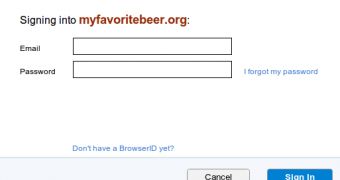One thing Mozilla has been trying to fix about the current web is identity. It's hardly the only one and it's easy to see why, identity is at the core of almost anything we do online.
There are countless ways of providing an identity online, but the emphasis in recent years has been on creating a central provider which can 'vouch' for you, be it Google, Facebook, OpenID and so on.
All of these technologies achieve the goal of having just one identity for a big number of sites, but they all have disadvantages, the fact that you hand over your identity to a third party is one of the biggest, Mozilla believes.
Which is why it created BrowserID, a new, decentralized way of providing an identity, i.e. logging into sites, without having to create new accounts all the time, use different passwords, or rely on Facebook and Google to do that for you.
"With BrowserID, there is a better way to sign in. BrowserID implements the 'verified email protocol', which offers a streamlined user experience. A user can prove their ownership of an email address with fewer confirmation messages and without site-specific passwords," Mozilla explained.
Here's how BrowserID works. When you land on a site that supports the technology, you can check out this demo site that Mozilla set up for this purpose, you will be prompted to log in with your BrowserID.
A pop-up window enables you to log into BrowserID, if you haven't done so in the browser you're using, or to create a new BrowserID account if you don't have one.
The first time you do it, you have to provide an email address and then confirm that you own that email via a verification message. Once you've done that once for BrowserID you won't have to do it ever again.
BrowserID creates a set of encrypted keys which will be used to verify your ownership on other sites. You can then log into any site that supports the technology by only providing an email address.
There are a couple of big advantages to BrowserID, for one, it's one of the simplest such system to date and, second, it means that you don't rely on a big company for your identity, though you'll still have to rely on a third-party.
Of course, the technology may be here, but browsers need to adopt it and websites have to warm up to it as well. The first part can be avoided, there is a way to use BrowserID even if it's not built into your browser. The second part may prove the challenging one.

 14 DAY TRIAL //
14 DAY TRIAL //